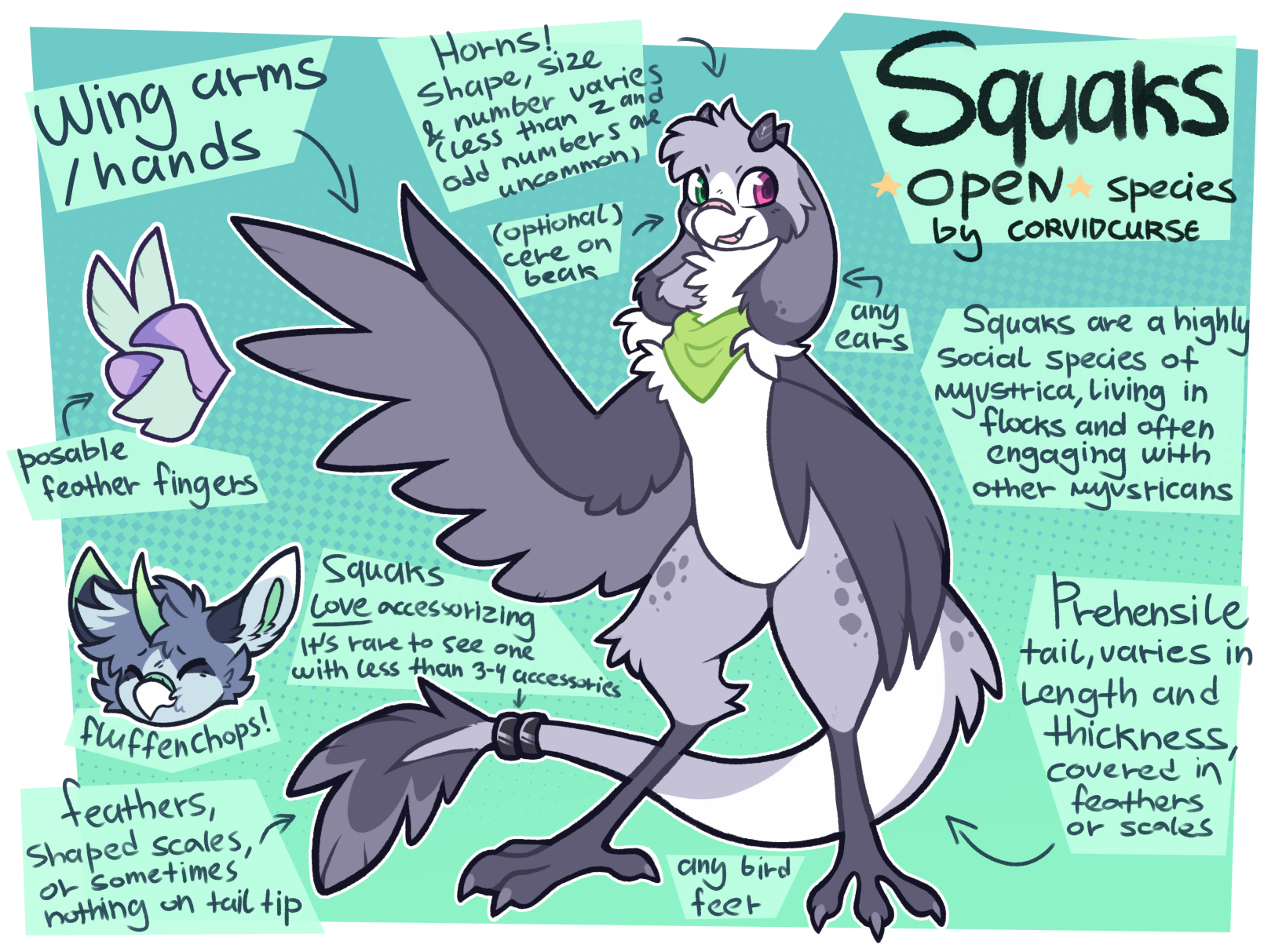SQUAKS

Appearance & Physiology
Squaks stand upright at 5’0”/1.52m average and are typically fully feathered with exception of their beaks, feet and sometimes tails being scaled. They have large wings that also function as arms/hands. While they are capable of flight, they usually don’t do it a lot, only sometimes flying/hovering across short distances. They tend to have a large variety of horns, rarely having none. Their ears also tend to vary a lot. They most commonly have long tails, sometimes being tipped with feathers, large shaped scales, or being bare at the tips. As stated previously, they may be feathered, scaled, or both. Their tails may also vary a lot in length and thickness, some may even make use of transformative magic and have “exotic” tails.
They are also usually seen sporting a variety of accessories, there is an ingrained desire in them to accessorize and it’s rare to ever see a squak not wearing at least a few. Most commonly this ends up being various neck accessories such as scarves, earrings and rings. They often craft and trade these accessories among themselves, until they find ones they most connect with. It’s pretty common for them to accumulate collections of accessories with a lot of sentimental value and memories attached to them.
Magic Ability
Squaks don’t often tend to learn much magic, but they do often innately use a little kinetic magic to assist in flight, or just to hop up higher. If they were to learn magic, kinetic magic that is used on one’s self would come to them most naturally, as well as air/wind related magic.
Life / Society
Squaks are usually very extroverted and social, most commonly living among large flocks of their own kind, though it’s fairly common for them to make home among other species as well, as long as they are able to form social circles there (which they usually are). Introverted squaks exist, though rarely, but they still require at least a small social circle to thrive, completely isolated squaks tend to quickly grow depressed.
They rarely ever hold any bad opinions of other species and generally get along with them well. Due to their active and social nature, they may have trouble getting along with more introverted species/individuals, but if there is a connection to be made, they tend to readily adapt to less outgoing companions' needs and boundaries.